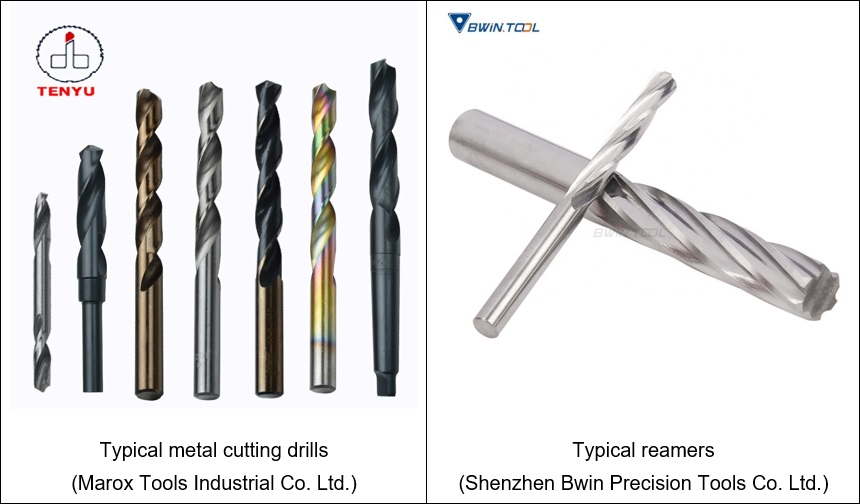In order to make a macro-scale hole on a solid surface, a series of different machining processes are carried out depending on the finish and tolerance level requirement. One typical series of hole production can be— (i) Centering, (ii) Drilling, (iii) Boring, (iv) Reaming, and (v) Honing. Centering is performed to locate the hole center, drilling is carried out to originate a hole and boring is carried out to enlarge the hole diameter. Reaming and honing are carried out to improve the finish of the hole surface at different levels and to improve the dimensional accuracy and tolerance.
Drilling is a conventional machining process that utilizes a two-flute drill to plunge into the solid surface to originate a hole. Diameter of the hole is limited by the drill diameter; in fact, they are equal. Sometimes to enlarge the hole diameter, boring is carried out after drilling. Both of these processes offer bulk removal that indicates high material removal rate (MRR). However, neither drilling nor boring can provide high levels of dimensional accuracy and surface finish. For improving surface quality and tolerance level, reaming is sometimes carried out after drilling or boring. Sometimes very high accuracy and tight tolerance are required for assembly purposes, particularly in press fit or leak-proof joining. Reaming process utilizes a multi-point cutter (called reamer) to remove very small volume of material to improve upon dimensional accuracy and tolerance. Since reaming smoothens the hole surface, so a hole is prerequisite for reaming, and thus drilling must be carried out prior to reaming. As usual reaming produces better surface finish as compared to drilling. Following sections elaborate various similarities and differences between drilling and reaming.

Similarities between drilling and reaming
- Both drilling and reaming processes are associated with hole fabrication.
- Both the processes are considered as conventional machining or metal cutting operations. So here a cutting tool compresses a thin layer of workpiece material to remove it in the form of chips.
- Both the processes come under subtractive manufacturing approach (or top-down approach) as layers of excess material are removed gradually from the solid blank. This is contrary to the additive manufacturing approach where layer by layer material is added one over another to build the 3-D component.
- Chips are inherent in both the processes as material is removed in the form of chips.
- Heat generation, burr formation and residual stress are also inherent in both the processes; however, the levels are different. Cutting fluid can also be applied in both the processes if required.
Differences between drilling and reaming
| Drilling | Reaming |
|---|---|
| Drilling is performed to originate a hole on a solid surface. | Reaming is performed to finish internal surface of an existing hole. |
| Drilling is the first step of hole making. After drilling either boring or reaming can be carried out depending on the requirement. | Reaming can be carried out only if a hole exists. So reaming is performed only after drilling (or boring). |
| Cutting tool used in drilling operation is called Drill. | Cutting tool used in reaming operation is called Reamer. |
| Metal cutting drill usually consists of two cutting edges. So drill is considered as a double point cutting tool. | Reamer contains large number of cutting edges (minimum 4). So reamer is a multi-point cutting tool. |
| Surface of a drilled hole is not highly finished (i.e. high surface roughness). | Reaming is performed to highly finish (i.e. reducing the roughness) the internal surface of the holes. |
| Tight tolerance cannot be obtained by drilling operation alone. Sometimes tight tolerance is required for assembly, especially for press fit applications. | Reaming can easily provide tight tolerance. |
| Axial length of hole can be easily increased by drilling operation. | Axial length of the hole cannot be altered by reaming. Only diameter of the hole can be increased slightly. |
| Material Removal Rate (MRR) in drilling is significantly higher. | MRR in reaming operation is comparatively lower. |